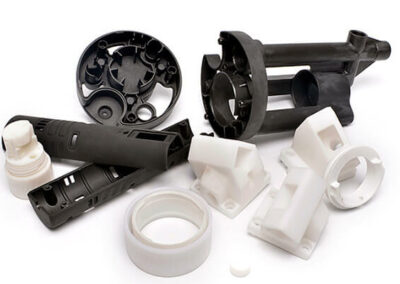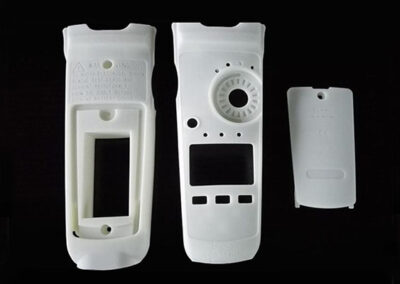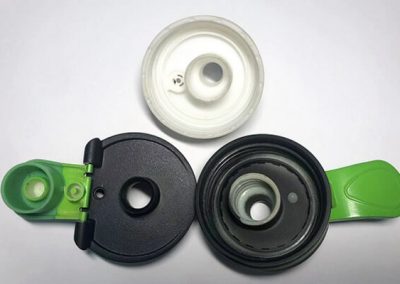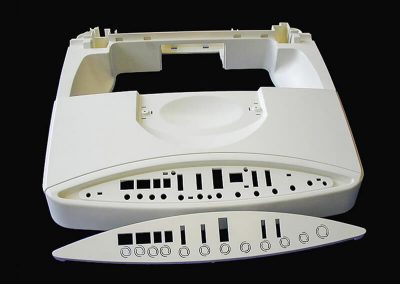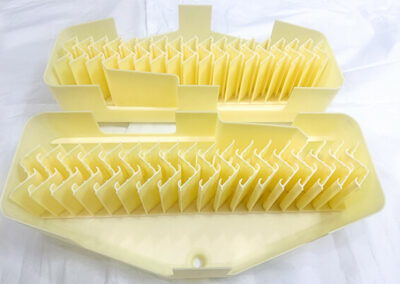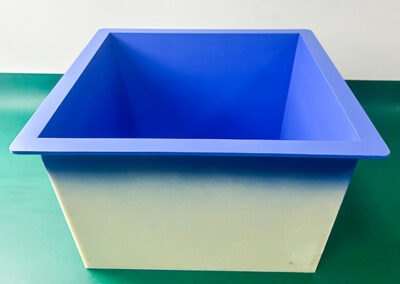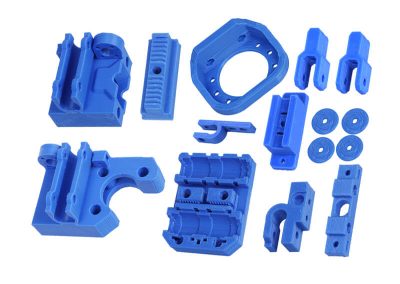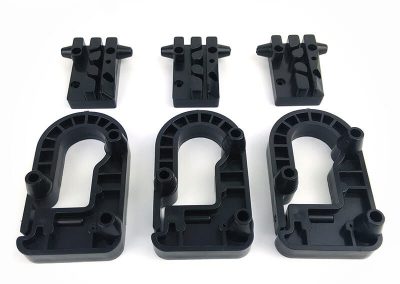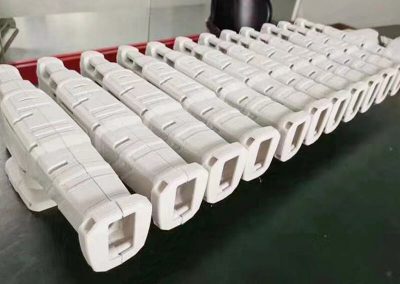Prototype CNC Machining Solution at Sungplastic
Prototyping, to put it simply, is the process of actually creating a model or draft of a concept. As engineers, prototyping is a critical step in the creation of a product since it allows us to touch, view, and interact with a concrete model in real life. Prototyping has traditionally been a time-consuming and expensive process, but today’s fast prototyping techniques like prototype CNC machining enable ideas to come to life within a few days.
At Sungplastic, you can enjoy the rapid prototypes manufacturing services. Read more about these please.
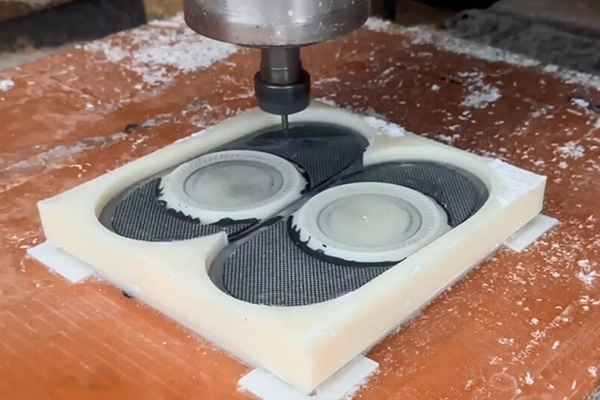
Advantages of CNC Machined Prototypes
Enhanced Structural Integrity
CNC machined components exhibit a superior level of strength and a closer resemblance to the desired mechanical and material properties of the final product when compared to 3D printed parts. Among these properties, structural integrity—comprising strength, stiffness, and hardness—holds paramount importance. In additive manufacturing, the fusion of layers is not always flawless, leading to voids, porosity, or layer misalignment. These imperfections can compromise the structural integrity of the end product. In contrast, subtractive manufacturing via CNC machining carves prototypes from solid, homogeneous material stock, significantly reducing the risk of geometric irregularities.
Precision
Prototype CNC machining stands out as one of the most reliable manufacturing methods for producing parts with stringent tolerances. Prototype CNC machining can consistently maintain tolerances as tight as one ten-thousandth of an inch, while 3D printing can only achieve tolerances on the order of a few thousandths of an inch—a notable difference in precision.
Dimensional Accuracy
Whether you’re CNC machining a prototype from plastic or metal, you can achieve a higher level of dimensional accuracy compared to other rapid prototyping methods. CNC machining excels at creating parts with intricate geometries while maintaining a high degree of accuracy.
Versatile Material Selection
Prototype CNC machining offers versatility in material selection, accommodating a wide range of materials from soft and ductile to hard and rigid, including metal alloys, wood, and plastic. Its adaptability stems from its capacity to work with virtually all solid materials, extending to vinyl, fiberglass, carbon fiber materials, laminates, fiberboard, and corrugated plastic.
Large-Scale Production
Prototype CNC machining can accommodate substantial product sizes, exemplified by machines like the Thermwood M400, touted as one of the world’s largest CNC machines, capable of producing parts up to eight feet in height. This feature can be invaluable in prototyping, minimizing the need for extensive assembly steps. While large 3D printers exist, CNC machining remains optimal for large part production.
Sungplastic’s prototype CNC machining services are ideal for mid-stage functional prototypes. They streamline development cycles by offering instant online quotes, intelligent Design for Manufacturability (DFM) feedback, and quick lead times. Additionally, Prototype CNC machining services include finishing, masking, and hardware installation, along with capabilities such as CNC milling, CNC turning, gear hobbing, and Electrical Discharge Machining (EDM), all with tolerances as tight as +/- 0.0002 inches.
Traditional Prototyping vs. Rapid Prototyping
In the realm of product development, there exists a dichotomy between traditional and rapid prototyping approaches. The traditional method typically involves a series of sequential steps:
- Devoting days or even weeks to designing a product using solid modeling software to create a 3D CAD model and a set of 2D drawings.
- Soliciting price quotes from multiple manufacturers for the fabrication of the required components.
- Waiting for weeks or even months to receive the machined prototype, often with limited communication throughout the process.
This conventional prototyping process relied on methods such as sand casting and the creation of mock-ups using clay molding, wood, wire, and tape. While these techniques may hold a certain charm, they are better suited for the world of filmmaking. With the advent of Prototype CNC machining, Prototype 3D printing, and rapid prototyping methodologies, today’s engineers can fabricate prototypes at a significantly accelerated pace.
Rapid prototyping encompasses a variety of techniques, including:
- Stereolithography (SLA) 3D Printing
- Fused Deposition Modeling (FDM) 3D Printing
- Selective Laser Melting (SLM), also known as Powder Bed Fusion 3D Metal Printing
- Selective Laser Sintering (SLS) 3D Printing
- Sheet Lamination
- Digital Light Processing (DLP) 3D Printing
- Binder Jetting 3D Printing
One of the primary considerations when employing rapid prototyping is that 3D printing can produce objects that closely resemble the 3D model and may even mimic the intended functionality. However, there is a potential for dimensional inaccuracies. Consequently, 3D printing is an excellent and cost-effective choice when the goal is to create a prototype primarily for display purposes.
Rapid prototyping via 3D printing also results in parts with different material properties and densities compared to the final product. This disparity arises from the limited range of materials available for 3D printing, although the selection of materials for additive manufacturing is continually expanding. For example, metal 3D printed parts often exhibit higher porosity, which can lead to mechanical failures and variable density unless additional post-processing is performed.
When the objective is to develop an engineering or production prototype that closely mimics the appearance, feel, and functionality of the final product, CNC rapid prototype machining emerges as the superior choice. Additionally, with digital manufacturing infrastructure, such as Sungplastic’s platform, obtaining instant quotes for CNC machined prototypes with turnaround times as short as a few days is now a reality.
Factors to Opt for CNC Machined Prototypes
When deciding between Prototype CNC machining and alternative methods for prototyping, it’s essential to consider the following key factors:
- Turnaround Time Variance
While Prototype CNC machining typically excels in larger volume production by offering shorter lead times, other rapid prototyping methods may provide quicker turnaround times specifically for prototype runs. - Lightweight Prototypes
Additive manufacturing methods allow for the creation of lightweight prototypes for display purposes by leaving the internal cavities hollow. Achieving the same level of complexity with Prototype CNC machining can be more challenging. - Material Waste and Sustainability
Additive manufacturing stands out as a more environmentally sustainable option due to its layer-by-layer building process, which generates less material waste. In contrast, CNC machining often produces chips as a byproduct, which can sometimes be recycled.
Prototype CNC Machining with Sungplastic
Sungplastic has a history of supplying our clients with precise, high-quality prototypes for a range of sectors.Welcome to the discussion of our prototype CNC machining product development experience.
We guarantee:
Strict manufacturing procedures-Prototype CNC machining, Prototype injection molding, Prototype 3D printing
All CNC machined components are thoroughly inspected using hand metrology, CMM, or laser scanners by highly qualified factory personnel.
Assurance of quality and dependable services
Sungplastic makes it quicker, simpler, and more effective to develop and distribute high-quality prototype components, regardless of the sort of CNC services you require.
Please feel free to contact us for your vital projects!
Get a free quote and design analysis today.
We’ll reply to you within 6 working hours.
We respect your privacy.
+86 139 2927 4777 (WhatsApp, Wechat)

